My 1-Wire Weather system
The system is so named because apart from an "earth" wire everything happens on one wire -
voltage is fed to the instruments and data transmitted back to the PC along the same wire.
All the electronics were purchased from Hobby Boards in the USA.
I have used the USB to RJ45 adaptor as the COM port on my PC is already in use.
The software I use is Weather Display 10.37
The live data is shown on my PC and averages are uploaded to the
Weather Underground site every 15 minutes.
I have used outdoor grade CAT5E cable for all outdoor wiring
(and most of the indoor wiring too, as I bought a 305 metre drum of it!)
In certain locations I have passed the cable through some hose pipe. This will prevent the cable getting damaged by gardening tools (strimmer etc.) The ends of the hose pipe face downwards to prevent them filling up with water!
In the loft I have a 6 way hub powered by a 15v 1A switched mode PSU. All the instruments can be daisy-chained, but this can make fault finding difficult. Fortunately there is software called OneWireViewer.exe which can help sort out any teething troubles.
In my installation the barometer is connected to the "pass through" outlet of the hub.
The idea is then to connect each other instrument to a different hub outlet.
As of October 2012, I have the following instruments working...
Barometer, wind speed and direction, rain gauge, outdoor temperature and humidity, and a solar sensor.
The wind instrument is connected to one of the hub outlets.
Click on the link to see assembly details (opens in a new page).
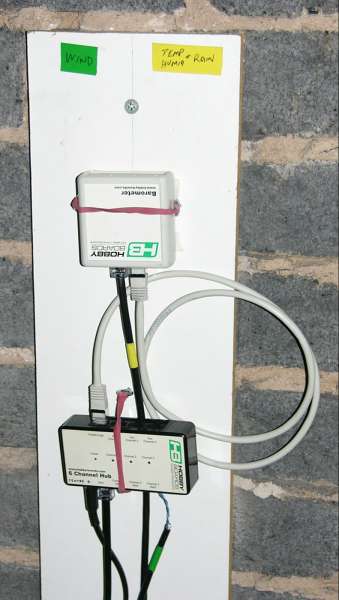
Home-made Stevenson Screen
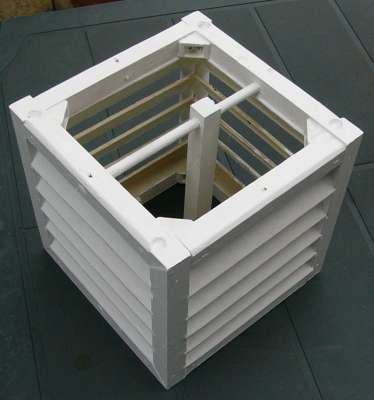
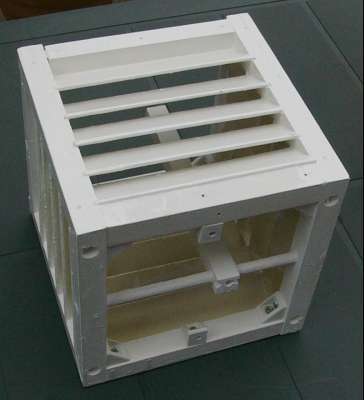
With the temperature and humidity sensor fitted - the bottom has 2 RJ45 Connectors.
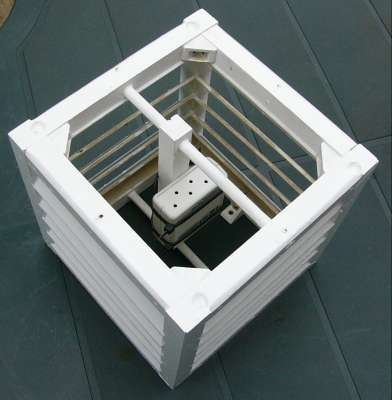
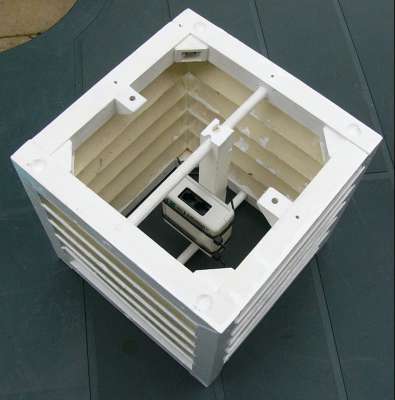
The Rainwise Rain Gauge internals. Note that this is a large unit - 8 inches diameter.
The red arrows point to the adjusting screws used when calibrating the instrument. (The lower the screw head, the greater the angle of the tipping bucket, the more water needs to be in it to tip. Approximately 8cc = 8 grams needed to be equivalent to 0.01 inches of rain).
The yellow arrow points to the magnet on the end of the tipping bucket mechanism which operates a reed switch at every tip.
It is mounted onto the (home-made) aluminium plate.

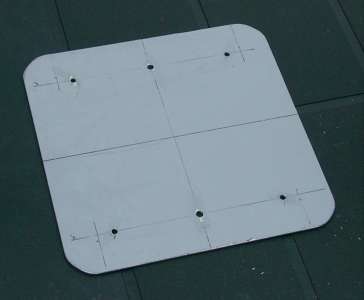
At the bottom of the garden we have an old concrete washing line post to which I fitted a couple of brackets and a waterproof junction box inside which there is an RJ45 IDC coupler

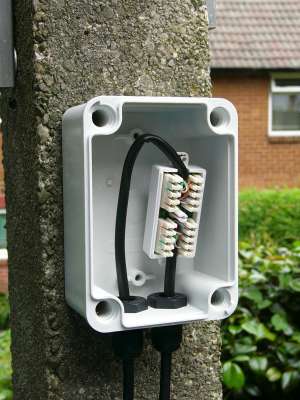
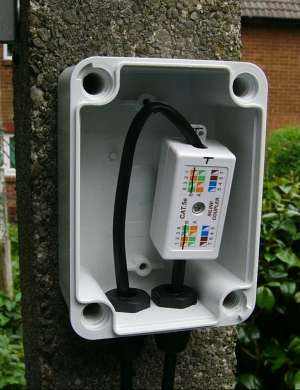
The collecting funnel of the rain gauge.
As supplied the "spikes" are not fitted. They were made from the ends of cables ties and their purpose is to stop birds perching on the rim of the funnel and using it as a toilet! The central filter is held in place by a split pin so can easily be removed for cleaning.

The Stevenson screen (with its pitched roof) and the assembled rain gauge mounted on the brackets.
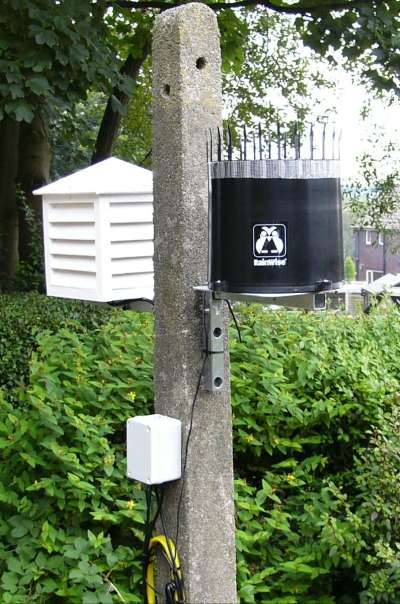
In the English winter we often get snow and ice.
Both can cause problems with weather instruments.
I have some suggestions for solving those problems.











